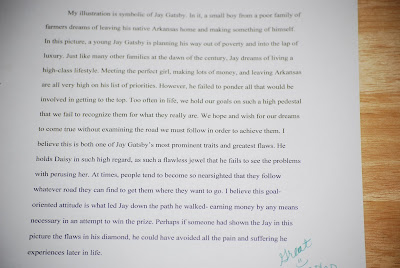To ensure that my
students understand allusions (and can laugh at Far Side jokes), I’ve always required them to study cultural
literacy.
We spend just a minute
or two each day going over the day’s term. We discuss terms in categories such
as Mythology/Folklore, Psychology/Sociology, World Religions, Idioms, Proverbs,
Arts/Entertainment, Philosophy/World Literature, and Bible.
At the end of each
category, I give a cultural literacy test. Usually, I have students draw six terms
from a bucket and write everything they know about five of them. Over the
years, I’ve kept a collection of funny responses. The ones below are all actual
answers high school freshmen gave on the Bible category test.
By submitting the
following answers, my students have taught me that spelling matters:
Job had lots of
patients.
God tested Job to see
if he was really fateful.
Sodom and Gomorrah
were two cities full of since.
A snake came to Eve,
but he was really Satin.
The Lamb of God was
cursived for our sins.
Soldiers put a crown
of thorns on Jesus’ head and moked him.
By submitting these
answers, my students have reminded me that it’s important to quote and
attribute quotations accurately:
God said something
like, “Here is my blood. Drink it.”
Jesus said, “An eye
for an eye and a cheek for a cheek.”
With these answers, my
students have proven that it’s important to know who your characters are:
Samson and Delilah
were two brothers.
Sodom had very long
hair.
Samson was a strong
man, and Delilah was the giant he killed.
Cain and Abel taught
us how to get along well with others.
Judas told the Punish
Pilot where Jesus was.
The Beatitudes were
the twelve disciples.
Finally, one student’s
test answer even reminded me of the importance of verb tense:
Armageddon was the end
of the world.
In next week’s blog,
I’ll provide you with some of my cultural literacy lists and with details about
how I implement them. For now, though, I hope you enjoyed some Cultural Literacy
Humor!













